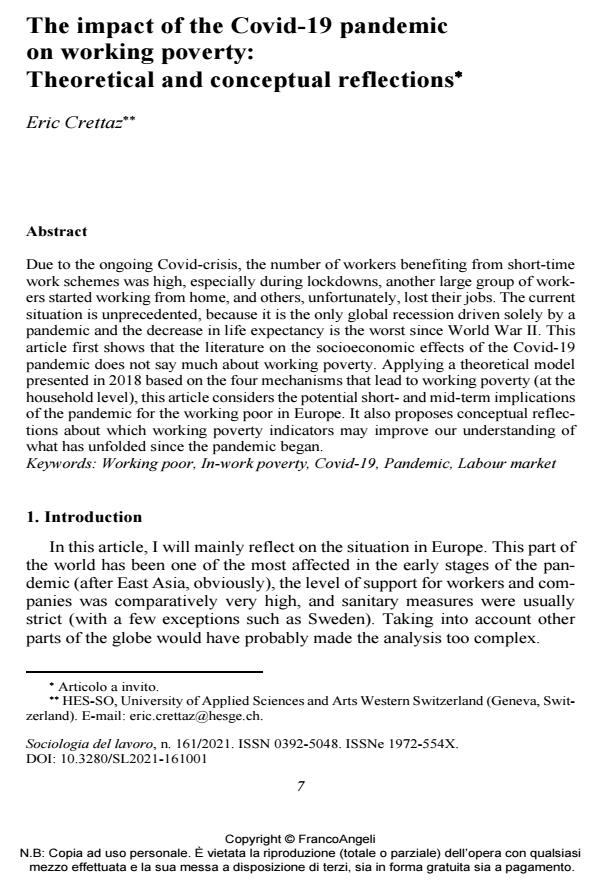The impact of the Covid-19 pandemic on working poverty: Theoretical and conceptual reflections
Journal title SOCIOLOGIA DEL LAVORO
Author/s Eric Crettaz
Publishing Year 2021 Issue 2021/161
Language English Pages 18 P. 7-24 File size 222 KB
DOI 10.3280/SL2021-161001
DOI is like a bar code for intellectual property: to have more infomation
click here
Below, you can see the article first page
If you want to buy this article in PDF format, you can do it, following the instructions to buy download credits

FrancoAngeli is member of Publishers International Linking Association, Inc (PILA), a not-for-profit association which run the CrossRef service enabling links to and from online scholarly content.
Due to the ongoing Covid-crisis, the number of workers benefiting from short-time work schemes was high, especially during lockdowns, another large group of workers started working from home, and others, unfortunately, lost their jobs. The current situation is unprecedented, because it is the only global recession driven solely by a pandemic and the decrease in life expectancy is the worst since World War II. This article first shows that the literature on the socioeconomic effects of the Covid-19 pandemic does not say much about working poverty. Applying a theo-retical model presented in 2018 based on the four mechanisms that lead to working poverty (at the household level), this article considers the potential short- and midterm implications of the pandemic for the working poor in Europe. It also proposes conceptual reflections about which working poverty indicators may improve our understanding of what has unfolded since the pandemic began.
Keywords: Working poor, In-work poverty, Covid-19, Pandemic, Labour market
- Chat digitali per il contrasto delle povertà relazionali: apprendimenti dalla valutazione quali-quantitativa di un intervento sociale Arianna Santero, Monica De Luca, Samuele Poy, in RIV Rassegna Italiana di Valutazione 92/2025 pp.75
DOI: 10.3280/RIV2025-092005
Eric Crettaz, The impact of the Covid-19 pandemic on working poverty: Theoretical and conceptual reflections in "SOCIOLOGIA DEL LAVORO " 161/2021, pp 7-24, DOI: 10.3280/SL2021-161001